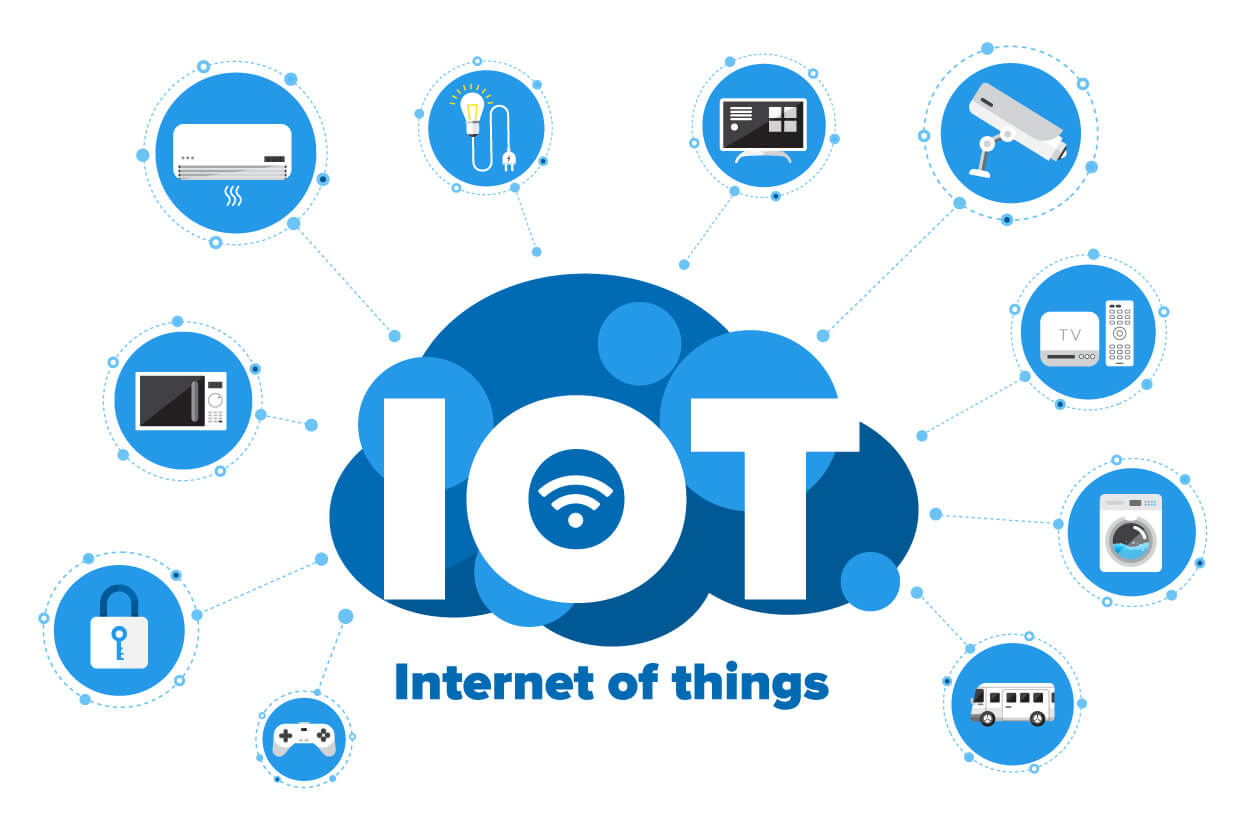Internet of Things (IoT) and Its Applications
Internet of Things (IoT)
The Internet of Things (IoT) is a revolutionary technology that is constantly transforming our interaction with the world around us. It allows to extend internet connectivity beyond traditional computing devices like computers or smartphones to a diverse range of everyday objects that are embedded with internet-connected sensors and actuators. This allows these objects to collect and exchange data with the network autonomously, enhancing their functionality and enabling new forms of communication between things and people, and among things as well.
Core Components of IoT
- Devices and Sensors: It includes smart devices, sensors, and actuators that interact with the physical world. Sensors collect data like temperature, pressure, sound, or motion, while actuators can perform actions based on received instructions.
- Connectivity: Reliable and secure communication is crucial for transmitting data from sensors to other parts of the system. Technologies and protocols that enable communication between devices and other components in the IoT network mostly include Wi-Fi, Bluetooth, and cellular networks.
- Data Processing: It can involve edge computing, where processing happens close to the data source, or cloud computing, where data is sent to powerful servers for central processing. The extracted insights can then be used for various purposes, like triggering automated actions, generating reports, or performing predictive maintenance.
- User Interface: It can be a mobile app, web interface, or even voice-controlled interfaces. Users can monitor data collected from sensors, control connected devices, and access insights generated through analytics.
Applications of IoT
The effect of IoT is far-reaching, with applications spanning multiple industries:

|
|
IoT Applications
|
Smart Homes:
Smart cooling systems, security systems and even lighting systems that can be controlled via mobile apps, appliances such as fridges that monitor food stocks and order groceries online, and voice assistants like Amazon Alexa and Google Home.
Healthcare:
Wearable devices that track physical activity and vital signs, remote monitoring of patients, medication adherence monitors, and even smart beds that can detect sleep patterns and adjust settings to improve sleep quality.
Agriculture:
Precision agriculture using sensors to monitor soil moisture levels, temperature, and crop health, enabling efficient water use and better crop management. Drones are also used for surveying and monitoring.
Industrial Automation (Industrial IoT or IIoT):
Sensors on machinery for predictive maintenance to anticipate failures before they happen, improving safety, and reducing downtime. IoT applications manage supply chain logistics, monitor factory performance, and increase overall production efficiency.
Smart Cities:
IoT devices help in managing traffic, reducing energy consumption, monitoring environmental pollutants, and improving public safety. Smart meters for utilities and intelligent street lighting are examples.
Retail:
Smart inventory management, personalized shopping experiences, supply chain optimization, and in-store customer analytics are possible because of IoT technologies.
Transportation:
Fleet tracking, predictive maintenance for vehicles, and real-time navigation systems ensure efficient logistics and safer roads. With the advent of autonomous vehicles, IoT is set to play a pivotal role.
Energy Management:
Smart grids that dynamically respond to the energy demand, optimize power distribution, and integrate renewable energy sources effectively.
Challenges in IoT
- Security and Privacy: As billions of devices connect to the internet, ensuring the secure transmission and storage of data, and safeguarding privacy become increasingly complex.
- Interoperability: Different devices and systems often use varying standards and protocols, making seamless interaction a challenge.
- Data Management: Processing the vast amounts of data generated by IoT devices requires robust data analysis tools and techniques.
- Regulatory and Legal Issues: The evolving nature of IoT prompts new regulations and standards that must be met, including data protection and safety regulations.
Future of IoT
Looking forward, the convergence of IoT with other emerging technologies like artificial intelligence, machine learning, and blockchain is expected to further expand its potential applications. With the rolling out of 5G networks, IoT devices will benefit from faster data transfer speeds, reduced latency, and increased reliability, paving the way for more real-time applications and an expanded scope of IoT in everyday life.
IoT is in continuous evolution, affecting how we live, work, and interact with our environment. It stands as one of the cornerstones of a more connected, efficient, and intelligent world. The true potential of IoT is perhaps only limited by the imagination of the innovators who integrate this technology into solutions that address real-world problems and open up new avenues for growth and development.
#IoT #EssenceofTech
Follow my Facebook Page 'Essence of Tech' for more contents...



Comments
Post a Comment